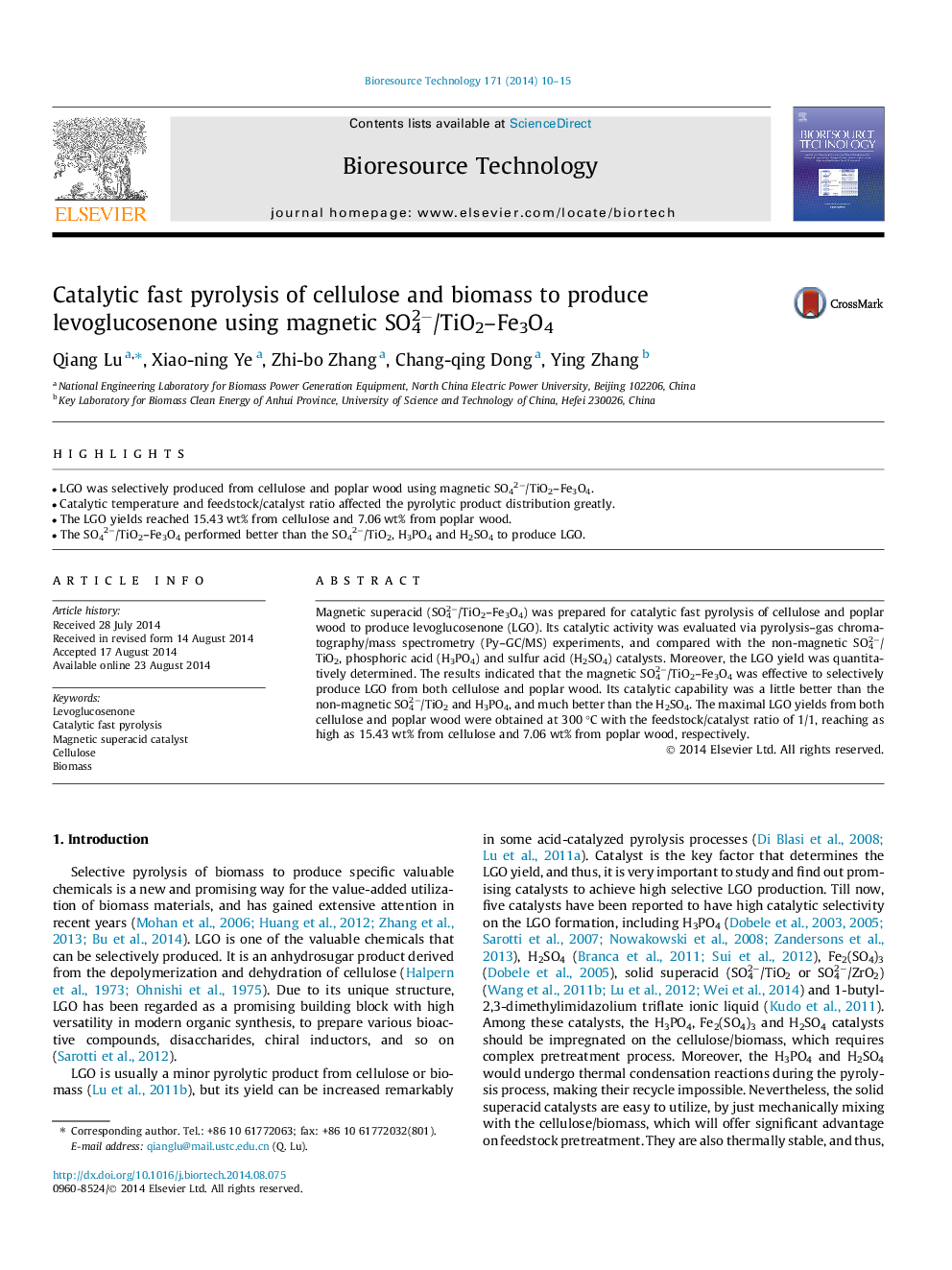| Article ID | Journal | Published Year | Pages | File Type |
|---|---|---|---|---|
| 680396 | Bioresource Technology | 2014 | 6 Pages |
•LGO was selectively produced from cellulose and poplar wood using magnetic SO42−/TiO2–Fe3O4.•Catalytic temperature and feedstock/catalyst ratio affected the pyrolytic product distribution greatly.•The LGO yields reached 15.43 wt% from cellulose and 7.06 wt% from poplar wood.•The SO42−/TiO2–Fe3O4 performed better than the SO42−/TiO2, H3PO4 and H2SO4 to produce LGO.
Magnetic superacid (SO42−/TiO2–Fe3O4) was prepared for catalytic fast pyrolysis of cellulose and poplar wood to produce levoglucosenone (LGO). Its catalytic activity was evaluated via pyrolysis–gas chromatography/mass spectrometry (Py–GC/MS) experiments, and compared with the non-magnetic SO42−/TiO2, phosphoric acid (H3PO4) and sulfur acid (H2SO4) catalysts. Moreover, the LGO yield was quantitatively determined. The results indicated that the magnetic SO42−/TiO2–Fe3O4 was effective to selectively produce LGO from both cellulose and poplar wood. Its catalytic capability was a little better than the non-magnetic SO42−/TiO2 and H3PO4, and much better than the H2SO4. The maximal LGO yields from both cellulose and poplar wood were obtained at 300 °C with the feedstock/catalyst ratio of 1/1, reaching as high as 15.43 wt% from cellulose and 7.06 wt% from poplar wood, respectively.
